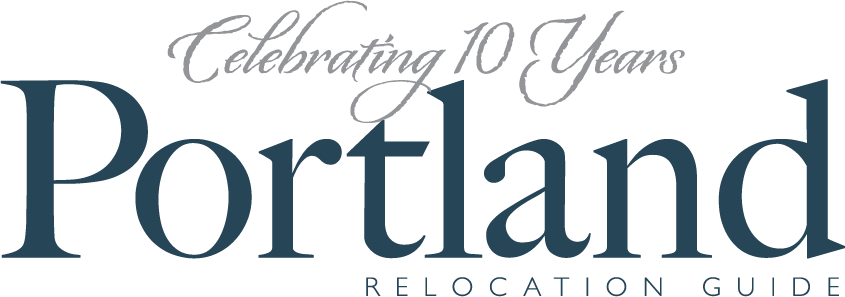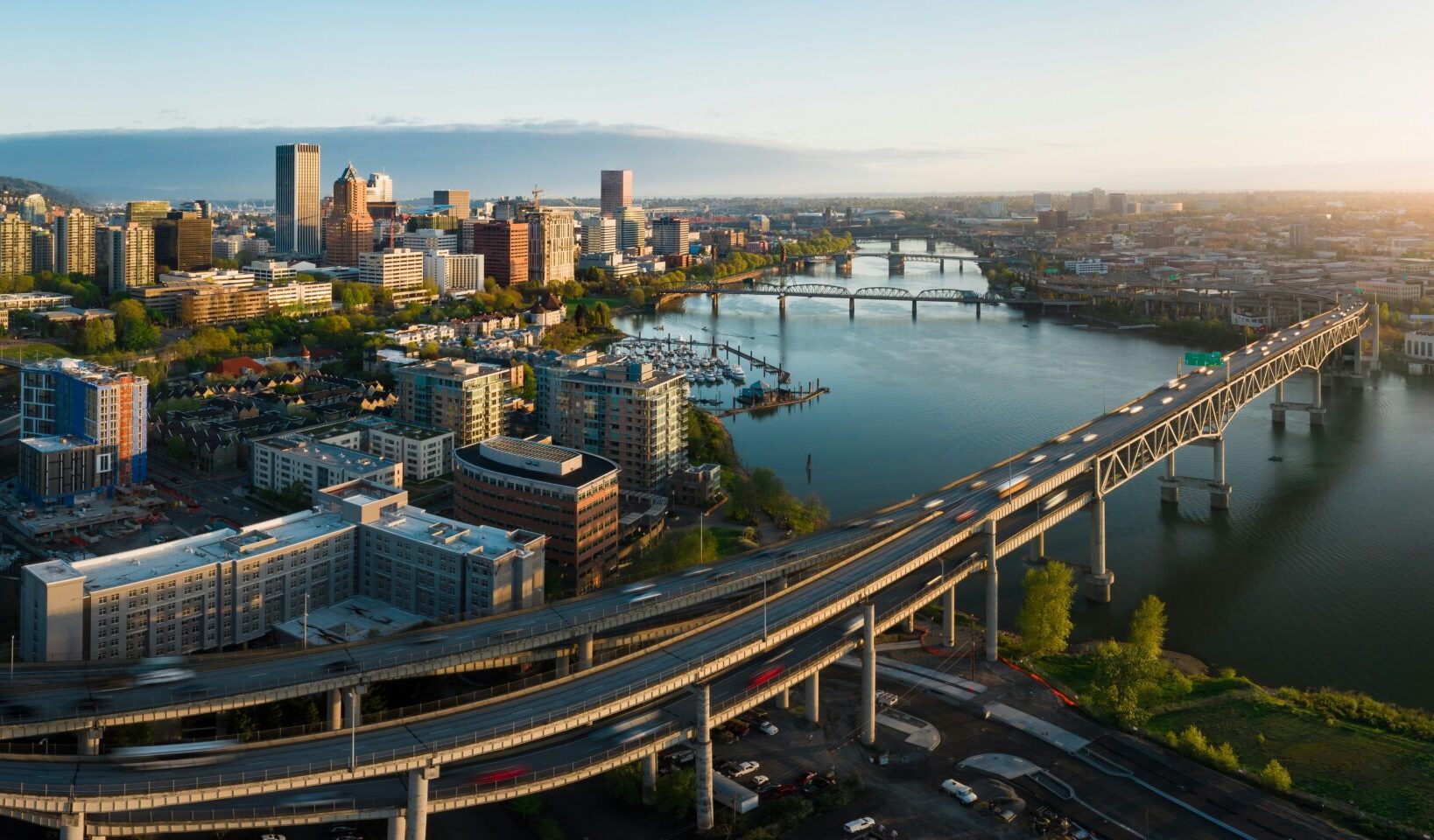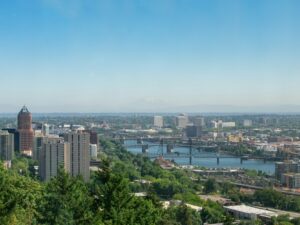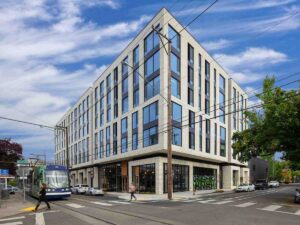Late summer/fall in the Pacific Northwest can bring wildfire smoke in Portland to the Portland–Vancouver metro. Some years it’s a light haze; other years we see multiple “unhealthy” days. Knowing how to read the AQI, prep your home, and choose the right gear turns smoke days from chaos into “handled.” AirNow’s AQI categories flag risk levels: 101–150 = Unhealthy for Sensitive Groups, 151–200 = Unhealthy, 201–300 = Very Unhealthy, 301–500 = Hazardous.
Understanding the impact of wildfire smoke in Portland is crucial for maintaining health and safety during fire season.
Quick facts for newcomers
If you’re moving into the area, it’s important to be aware of the fire season, which typically occurs from July to September and sometimes extends into October, depending on regional fire activity. To monitor air quality, consult resources like AirNow, Oregon DEQ/OregonSmoke.org, and PurpleAir which uses community sensors. For health decisions, start with official sources such as AirNow or DEQ. Keep in mind that certain groups are at higher risk, including children, older adults, pregnant individuals, and anyone with asthma, COPD, or heart disease. The Oregon Health Authority provides specific guidance to protect these vulnerable populations.
Awareness of wildfire smoke in Portland helps residents prepare and respond effectively.
What the AQI means—and what to do
Understanding Wildfire Smoke in Portland
Use this as your Portland smoke-day playbook:
– AQI 0–100 (Good/Moderate): Normal life. Keep windows open as desired.
– AQI 101–150 (USG): Sensitive groups limit prolonged outdoor activity; consider a clean-air room at home.
– AQI 151–200 (Unhealthy): Everyone reduce outdoor exertion; move workouts indoors; run HEPA filtration; keep windows/doors closed.
– AQI 201–300 (Very Unhealthy): Avoid outdoor activity; use a well-sealed clean-air room. N95 respirators can reduce inhaled particles if you must go outside.
– AQI 301+ (Hazardous): Stay indoors with filtration; reschedule activities; check on vulnerable neighbors.
Stay informed about wildfire smoke in Portland to make safe choices during summer.
Set up a ‘Clean-Air Room’ at home (renters included)
- Pick the tightest room (often a bedroom).
2. Close windows/doors; set HVAC to recirculate (not “fresh air”).
3. Run a portable air cleaner with a True HEPA filter sized for the room. If supplies are tight, build a DIY box-fan filter using a 20″ box fan + MERV-13 filter (2012+ certified fans only).
4. Seal obvious leaks (draft stoppers, painter’s tape around leaky sashes during smoke events).
5. Avoid indoor smoke sources (candles, incense, frying, vacuuming without HEPA).
Commuting & daily life on smoke days
– Transit & traffic: Smoke can settle in river valleys overnight; mornings may be worse—plan flexible commutes.
– Gyms & indoor activities: Choose spots with visible filtration/ventilation; ask if they run MERV-13 or HEPA.
– Biking/running: If AQI ≥ 151, swap to low-exertion indoor work or reschedule.
– Masks: N95 (properly fitted) filters smoke particles more effectively than cloth/surgical masks when you must be outside.
Consider the effects of wildfire smoke in Portland when planning outdoor activities.
Kids, schools, and activities
Check your district’s smoke protocols (PPS, Beaverton, Hillsboro, etc.). Many move PE/recess indoors at USG/Unhealthy AQI. If your child has asthma, keep an updated action plan and meds accessible. Schools may modify schedules based on the levels of wildfire smoke in Portland.
Pets
Short walks only during Unhealthy days; keep water bowls clean; use indoor play for exercise. (Cats with respiratory issues can be sensitive—treat them like “at-risk.”). Monitoring wildfire smoke in Portland is important for pet health as well.
What to buy—starter checklist
– True HEPA air purifier (CADR sized to your room).
– MERV-13 filters (plus a 20″ box fan as backup).
– N95 respirators (range of sizes; fit matters).
– Weather-stripping / painter’s tape for temporary sealing.
– Saline eye drops & water (hydration helps).
When shopping, prioritize items that help mitigate the effects of wildfire smoke in Portland.
Trusted Portland-area resources (bookmark these)
– AirNow AQI – official, map-based AQI & health guidance.
– Oregon DEQ / OregonSmoke.org – statewide smoke advisories & forecasts.
– Oregon Health Authority – Wildfires & Smoke – health guidance & multilingual fact sheets.
– EPA DIY Air Cleaners – step-by-step fan-filter builds.
Utilize local resources to stay updated on wildfire smoke in Portland and its impacts.
FAQs
Q: Is Portland’s air quality bad in summer?
A: It varies year to year. Some seasons pass with minimal smoke; others bring multiple “Unhealthy” days. Check DEQ/AirNow daily in late summer.
Q: Do cloth masks help with wildfire smoke?
A: Not much. For particles, use a NIOSH-approved N95 for necessary outdoor time. Fit matters.
Q: Will a DIY filter actually work?
A: Yes—box fan + MERV-13 filter can meaningfully reduce indoor particulate; use newer, certified fans and consider thicker/multi-filter builds for better performance.
Understanding the variability of wildfire smoke in Portland is key to effective navigation of summer conditions.
Next steps for newcomers
– Order your free Portland Relocation Guide for more moving-day checklists.
– Explore these helpful reads on our site:
– Cost of Living in Portland (to budget for filtration gear).
– Portland & Vancouver Utilities (HVAC tips, service contacts).
– Back to School in Portland (district links & family prep).




